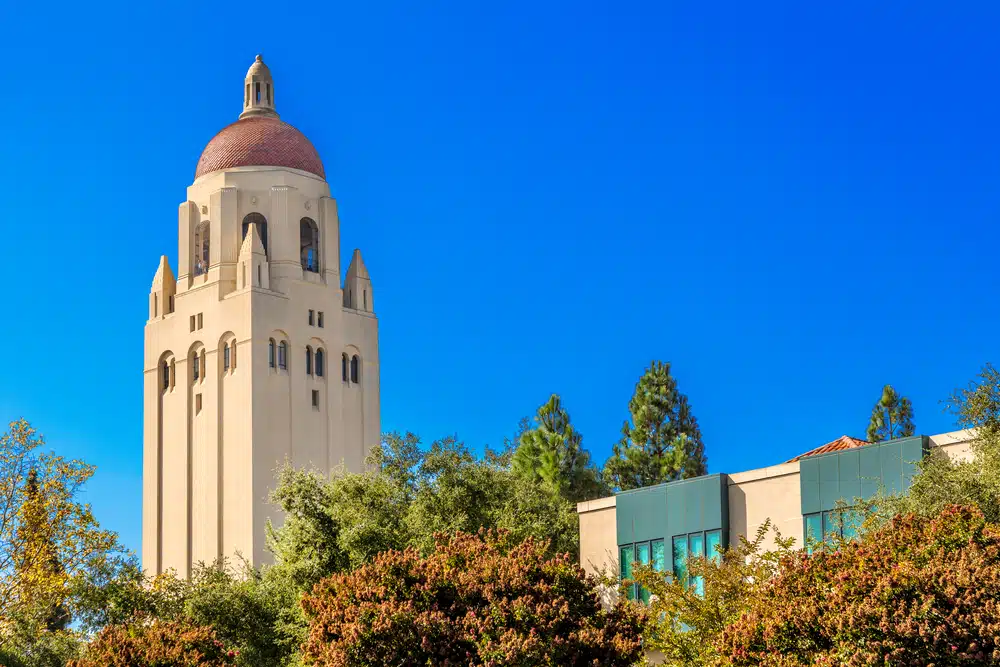Statistics for Stanford’s Class of 2025
Stanford University is one of the world’s leading teaching and research institutions in the heart of California’s Silicon Valley. Known for its prestigious educational programs and innovative learning approach, Stanford has a high reputation for cultivating some of the sharpest minds. This article provides an in-depth look at the statistics for Stanford’s Class of 2025, shedding light on the University’s admission process, the academic profiles of accepted students, financial aid opportunities, and more.
Understanding Stanford’s Admission Process
Stanford’s admission process is rigorous, multifaceted, and designed to assess each applicant’s academic abilities, personal interests, and potential contributions to the Stanford community. Student prospects are evaluated based on several key factors.
When it comes to evaluating applicants, Stanford takes into consideration a variety of factors, including standardized test scores, extracurricular activities, and personal essays. These components provide a comprehensive view of each student and help the admissions committee make informed decisions.
The Role of SAT and ACT Scores
A significant component of the admission process is the performance on standardized tests such as the SAT or ACT. These scores provide a quantifiable measure of a student’s academic aptitude and readiness for university-level coursework. While high scores do not guarantee admission, they correlate with a greater likelihood of acceptance.
Stanford’s class of 2025 had a middle 50% SAT score range of 1440 to 1550 and an ACT score range of 32 to 35. This emphasizes the competitive academic nature of admitted students.
However, it’s important to note that Stanford takes a holistic approach to admissions. They understand that test scores are just one aspect of a student’s profile and consider them in conjunction with other factors.
Importance of Extracurricular Activities
Beyond academics, Stanford also heavily weighs a student’s commitment to extracurricular activities. This can include sports, volunteer work, internships, and more. These activities provide insight into a student’s passions, leadership qualities, and contributions to their community.
Analysis of the admitted students for Stanford’s Class of 2025 shows a vast majority were involved in multiple extracurricular activities throughout their high school careers. This demonstrates Stanford’s desire to admit well-rounded individuals who have a positive impact outside of the classroom.
Extracurricular involvement showcases a student’s interests and talents and indicates their ability to manage their time effectively and pursue their passions alongside their academic responsibilities.
The Impact of Personal Essays
Lastly, the personal essays applicants submit play a crucial role in admission. These narrative pieces allow students to showcase their personalities, highlight unique experiences, and explain how they would add value to the Stanford community.
Essays for the Class of 2025 exhibited considerable diversity, with topics ranging from personal struggles to academic discoveries. Stanford values authenticity and encourages applicants to share their genuine stories and perspectives.
The admissions committee gains insight into an applicant’s character, motivations, and aspirations through personal essays. It helps them understand how a student’s background and experiences have shaped them and how they can contribute to Stanford’s vibrant and diverse community.
Overall, Stanford’s admission process comprehensively evaluates an applicant’s academic achievements, extracurricular involvement, and personal qualities. By considering multiple aspects of a student’s profile, Stanford aims to select a diverse and talented cohort of individuals who will thrive academically and contribute meaningfully to the university community.
Demographics of Stanford’s Class of 2025
The diversity of an institution’s student body can greatly enhance the academic environment. Let’s look at the demographics for Stanford’s Class of 2025.
Stanford University, known for its commitment to excellence and inclusivity, continues to attract diverse students from all walks of life. The Class of 2025 is no exception, with a vibrant mix of individuals who bring unique perspectives and experiences to campus.
Breakdown by Gender
With a slightly higher number of females admitted than males, Stanford’s gender breakdown illustrates an almost equal representation among genders. The Class of 2025 comprised approximately 52% females and 48% males.
Gender equality is a priority at Stanford, and the university takes pride in fostering an environment where all students, regardless of their gender identity, feel supported and empowered. From leadership opportunities to inclusive policies, Stanford strives to create a campus culture that values and respects the contributions of every individual.
Geographic Distribution
Stanford’s geographic distribution statistics for the Class of 2025 showcase its wide reach and global appeal. The class is represented by students from every U.S. state and numerous countries worldwide, giving the university a diverse and global perspective.
From the bustling streets of New York City to the serene landscapes of rural Iowa, Stanford’s Class of 2025 brings together students from various backgrounds and locations. This rich tapestry of cultures and experiences enriches the academic discourse and fosters a vibrant community where students can learn from one another.
Diversity and Inclusion Statistics
Stanford’s commitment to diversity and inclusion is directly reflected in their admissions. In the Class of 2025, a significant proportion come from ethnically diverse backgrounds. Further, Stanford makes considerable efforts to foster an inclusive environment for students of all genders, religions, and sexual orientations.
Stanford students can engage with individuals from different racial and ethnic backgrounds, fostering a sense of cultural appreciation and understanding. The university’s commitment to inclusion extends beyond demographics, as it actively supports student organizations and initiatives that promote dialogue and celebrate diversity.
Moreover, Stanford provides comprehensive resources and support systems to ensure students from all backgrounds can thrive academically, socially, and personally. From mentorship programs to cultural centers, the university strives to create an inclusive and welcoming environment for everyone.
Academic Profile of the Class of 2025
Now, let’s delve into the academic profile of the admitted students and see what areas of study interest them the most.
Stanford University, known for its academic excellence and innovative programs, attracts a diverse and highly accomplished student body. The Class of 2025 is no exception, with students demonstrating a strong passion for various fields of study.
Most Popular Majors
Stanford University offers various undergraduate majors, resulting in a well-rounded and diverse student body. For the Class of 2025, the most popular fields of study were Computer Science, Biology, and Mechanical Engineering.
The popularity of Computer Science among the admitted students reflects the growing importance of technology in today’s world. With the rapid advancements in artificial intelligence, data science, and software development, it is no surprise that many students are drawn to this field.
Biology, on the other hand, captures the interest of students fascinated by the complexities of life and the opportunity to contribute to advancements in healthcare, genetics, and environmental sustainability. The interdisciplinary nature of biology allows students to explore various subfields, such as molecular biology, ecology, and neurobiology.
Mechanical Engineering, a field that combines principles of physics, mathematics, and materials science, attracts students with a passion for designing and building innovative machines and systems. Mechanical engineering offers many exciting career opportunities, from developing renewable energy solutions to designing autonomous vehicles.
Average High School GPA
The average high school GPA of admitted students for the Class of 2025 was a strong 4.18, reflecting the academic prowess required to gain admission into Stanford. This impressive GPA showcases these students’ dedication and hard work throughout their high school years.
Admission to Stanford is highly competitive, and the rigorous academic standards set by the university ensure that only the most exceptional students are admitted. The Class of 2025’s high average GPA is a testament to their intellectual curiosity, commitment to learning, and ability to excel in challenging academic environments.
AP and IB Scores
Students with impressive Advanced Placement (AP) and International Baccalaureate (IB) scores were also prevalent in the Class of 2025. These rigorous programs offer university-level courses to high school students, demonstrating their academic initiative and capabilities.
Advanced Placement courses allow students to explore college-level material and earn college credit by passing the corresponding exams. The Class of 2025’s strong performance in AP exams indicates their readiness to tackle advanced coursework and their desire to challenge themselves academically.
Similarly, the International Baccalaureate program offers a comprehensive and internationally recognized curriculum that prepares students for higher education. The Class of 2025’s impressive IB score statistics highlight their ability to excel in a rigorous and globally focused academic program.
Overall, the academic profile of the Class of 2025 at Stanford University showcases the university’s commitment to attracting talented and intellectually curious students. With their diverse interests, exceptional GPAs, and impressive AP and IB scores, these students are poised to contribute significantly to their chosen fields of study and society.
Financial Aid and Scholarships
The cost of attending university can be a significant concern for many students. Fortunately, Stanford offers a variety of financial aid and scholarship opportunities.
Stanford understands that a world-class education should be accessible to all talented individuals, regardless of their financial backgrounds. That’s why they are committed to providing robust financial aid and scholarship programs to support our students throughout their academic journey.
Percentage of Students Receiving Aid
Around 70% of Stanford’s Class of 2025 statistics received financial aid or scholarships. This generous financial aid policy underscores Stanford’s commitment to attracting and admitting students from various socio-economic backgrounds.
Their financial aid programs are designed to ensure that no student is deterred from pursuing their dreams of attending Stanford due to financial constraints. We believe that diversity in our student body enriches the educational experience for everyone, and we actively work towards creating an inclusive community.
Average Financial Aid Package
The typical financial aid package for students receiving aid was approximately $58,494. This significantly lightens the tuition load, making Stanford more accessible to a diverse range of students.
Their financial aid packages are tailored to meet the individual needs of each student. They consider factors such as family income, assets, and other financial obligations to ensure their students receive the support they need to thrive academically and personally.
Additionally, they offer a range of scholarships that recognize exceptional academic achievements, leadership potential, and unique talents. These scholarships provide financial assistance and open doors to various opportunities, mentorship programs, and networking events.
At Stanford, they believe investing in our students’ education is an investment in the future. The university proudly supports our students as they pursue their passions, make groundbreaking discoveries, and become leaders in their respective fields.
These statistics depict a dynamic, diverse, academically engaged Stanford Class of 2025. These students are set to make their mark at Stanford, further solidifying the University’s reputation as a global academic powerhouse.
If you want to discuss Stanford’s class statistics more or inquire about college admissions, look no further! Our experts here at AdmissionSight can help you! Here at AdmissionSight, we have over a decade’s worth of experience guiding students through the competitive admissions process to get accepted to the top universities in the world. Feel free to set up an appointment today to book your initial consultation.








































